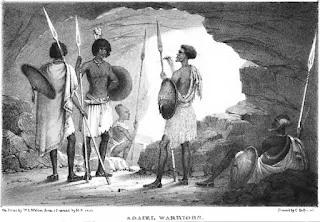Different Historical Names of Ethiopia
Over the centuries, the African country now known as Ethiopia has had many different names including Habesha, Nubia, D'mt, Aksum, Abyssinia, Land of Punt, and Italian East Africa.
Nine Different Names of Ethiopia Throughout Written History.
Over the centuries, Ethiopia has been known by many names, including Habesha, Nubia, D'mt, Aksum, Abyssinia, Land of Punt, Ethiopia, African Jerusalem, and Italian East Africa.
Habesha
Habesha is an indigenous term that refers to Semitic language-speaking and predominantly Orthodox Christian peoples found in the highlands of Ethiopia and Eritrea; the oldest reference to Ethiopia and Eritrea'sesha was in second or third-century Sabaean engravings. The Sabaean engravings are ancient inscriptions in the Arabian Peninsula, particularly in the Kingdom of Saba, modern-day Yemen.
Nubia
In the past, certain areas of Ethiopia were referred to as Nubia. Nubia was a kingdom along the Nile with cultural ties to ancient Egypt. The area's history can be traced back to at least 2000 BCE.
D'mt
Before the rise of Aksum, D'mt was an ancient kingdom in what is now Ethiopia during the Iron Age from 800 BCE to 701 BCE.
Aksum
Aksum was the name of an ancient kingdom centered in northern Ethiopia. It was a significant player in the Red Sea trade and is known for its obelisks and ancient civilization. As the Aksumite Kingdom evolved, it became known as the Kingdom of Axum, reflecting its capitaregion's central power of the region. Today's territory of modern-day Ethiopia claims this name may be due to the conquest of Meroe by the Aksumite Empire in 301 A.D. to 400 A.D., after which the Axumites began referring to themselves as Ethiopians. Ethiopia, then known as the Aksumite Empire, underwent significant changes. It was during the reign of King Ezana that Christianity was declared the state religion.
Abyssinia
Abyssinia is a historical name that has been commonly used to refer to the region that is now Ethiopia. It is derived from the Arabic term al-Habash and the ancient term Aksum, referring to the Aksumite Kingdom. Abyssinia was a kingdom first mentioned in Egyptian texts dating back to 2500 BC. Abyssinia was a significant power in northeastern Africa for many centuries, interacting with the Roman Empire, Persia, and other great powers of the ancient world.
Land of Punt
In ancient Egyptian inscriptions, Ethiopia was sometimes called the Land of Punt, a region associated with trade and exotic goods.
Ethiopia
The name Ethiopia was applied to the land and people by King Ethiopis I; however, the term Ethiopia is believed to be of Greek origin and used by the Greek historian Herodotus to refer to parts of Africa known to the Greeks at the time. Ethiopia has been used as a vague term for dark-skinned people since the time of Homer. In ancient times, Ethiopia often referred to the Kingdom of Kush in modern-day Sudan rather than strictly the territory of modern-day Ethiopia. This suggests that adopting the name Ethiopia was more of a gradual process than a single act by King Ethiopis I.
African Jerusalem
Ethiopia is a country that holds immense historical and cultural significance in the Christian world. The Ethiopian Orthodox Tewahedo Church, one of the oldest Christian churches in the world, has its roots in Ethiopia and has been a crucial part of the country's cultural and religious identity for centuries. The church plays a significant role in Ethiopian society, with its traditions, teachings, and practices influencing many aspects of daily life. Due to its rich and longstanding connection with the Ethiopian Orthodox Tewahedo Church, Ethiopia has earned the nickname African Jerusalem, a testament to its importance as a spiritual center for Christians across the continent.
Italian East Africa
In 1935, the African nation of Ethiopia was invaded and occupied by the Fascist regime of Italy under the rule of Benito Mussolini. The Italian forces launched a brutal campaign of conquest, using advanced weaponry and tactics to overpower the Ethiopian defenders. The conflict, which became known as the Second Italo-Ethiopian War, lasted for several months, resulting in the annexation of Ethiopia, along with Italian-controlled regions of Eritrea and Somaliland, to form the new colony of Italian East Africa. The annexation of Ethiopia was a significant event in African history, as it marked one of the last successful attempts by a European power to colonize the continent.


























